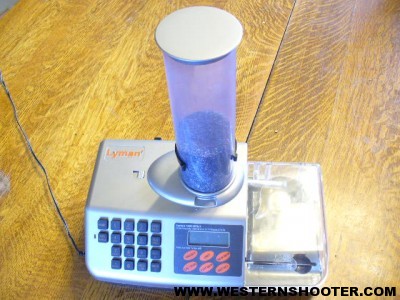
According to the 2010 U.S. Census, the average life expectancy of a human being is 78.3 years. I am nearly half way there. I was introduced to the joys of firearms when I was a young lad, by a neighbor who spent some time on the Air Force pistol team. I was introduced to two truths, one obvious, and one that was somewhat of a limit to my fun.
The obvious truth was that pulling the trigger and making noise was a lot of fun. I spent a good deal of time behind his old S&W .38 special, and when I switched to the 10/22, I earned the comment “think your Rambo don’t ya?” Soon enough, I was learning the proper way to fire a 1911.
The second truth was that the ammunition must be purchased, or handmade. I knew that ammunition for the .22 was cheap, as I had free reign to reload that 10 round cylindrical magazine and blast away with little regard to pinpoint accuracy. When I shot the pistols, the whole dynamic changed. When I was about 11 years old I was asked to help with the reloading process. I can say that I remember the process to be excruciatingly boring. How could it possibly take that long to make a cartridge? I learned all about case prep, priming details, powder weighing, and bullet seating. When I was around 14 my neighbor purchased a Dillon reloading machine. WOW! Less time sitting in the shed making cartridges means more time out having fun shooting them.
Fast forward to my mid 30’s, and I have informally decided that I need to own or shoot at least one of every type of firearm out there. If I live to the expected 78.3 years, that leaves me just over 40 years to have a whole lot more fun. I don’t want to waste all my “gun time” behind a reloading bench or at work so I can purchase my ammo.
Currently, my passion is for super accurate long range rifles. I have moved to a remote high desert location in Idaho that offers ranges exceeding 1000 yards out my back door. Most free time is spent loading the “perfect cartridge”. Unfortunately, the automatic reloading machines are not precise enough for the type of expected performance I want. All aspects of precision cartridge reloading means more time sitting at the bench, and less behind the trigger. I always considered weighing the powder charge to be the most tedious task (I use a RCBS 10/10). A few years ago I spotted a Lyman 1200 DPS3 on the shelf at Cabela’s in Boise. The DPS3 is a digital scale that throws the powder charge automatically. The gleam in my eye told my wife that I wanted one, but the fact is I was skeptical about its accuracy.
My next birthday, I was surprised to find the DPS3 wrapped up as a gift from my wife. It has now been a year since I received it, and have found that my skepticism was in error. The DPS3 is a full function scale that allows the user to pre-program specific powder weights and retains them in the built in memory. This is a handy feature for those who load several different bullet sizes and types, and don’t want to recreate the program each time.
THE BASIC’S
The basic function of the scale is easy to get started. The scale needs to be warmed up for the most accurate powder charge throws. It has a warm-up cycle of 30 minutes. First, you pour your powder of choice into the reservoir. Second, you turn the scale on for the warm up cycle. I try to remember this right away when starting a reloading session, so that it is warmed up by the time I get all other tasks completed (like case prep and priming). I have found that the scale can be used without warming up, but its accuracy suffers. An un-warmed scale can be off as much a two grains, which is unacceptable. It’s a good thing the scale’s digital readout displays the actual weight rather than the intended weight, so you can spot the error before you remove the powder from the scale.
After the warm-up is complete, you can simply type in the specific charge weight into the keypad and press enter. The DPS3 is accurate to .10 grain, which is the same margin of error that I keep when using a RCBS 10/10 balance scale. The DPS3 uses a trickle charge type of mechanism, just like the manual version of a trickle charger that you spin at one end and the powder falls out the other end of a small diameter metal tube. There is an electric motor within the DPS3’s housing that spins the metal drop tube very fast at first for a quick powder drop, then slows down as it nears the intended weight. When it gets to within .3 or .4 of the programmed weight, it twitches very slightly, dropping just a couple specs of powder at a time to achieve the .10 grain accuracy.
This process makes for a very fast powder drop, in reality, almost eliminates the time spent on preparing the powder charge. By the time I have dropped the powder charge into the case, seated the bullet, and inspected the finished cartridge, the DPS3 has already finished dropping the next charge. This easily cuts the actual reloading time in half. Average cycle time for each completed cartridge is 20 seconds for my current rifle loads. That is fast for a non-progressive machine.
TESTING, EXPERIMENTATION, ETC…
I felt that some quality control testing and experimentation was in order to verify that the DPS3 is as accurate as a balance scale.
The Test
IMR 4895 (medium length extruded powder)
Lyman 1200 DPS3 vs. RCBS 10/10 balance scale
Testing the accuracy of the DPS3 was very straight forward. I wanted to verify that the DPS3 was throwing as accurate a powder charge as I could do manually on the RCBS balance scale.
1) I zeroed the DPS3, by pushing the “Cal/Zero” button. I zeroed the RCBS by adjusting the turn screw, lining up the balance bar with the “zero” mark. Pushing the button on the DPS3 is more convenient and certainly faster.
2) I wanted to test small powder throws as well as large throws so I decided to make it easy for myself and throw powder charges in 10 grain increments. I threw 10, 40, 70, and 100 grain charges.
3) I also wanted to test the DPS3 over many charges, so I set the DPS3 to throw 10 charges of 41.5 grains. I would see if the sum of all these throws showed 415 grains on the RCBS.
THE RESULTS
The first test was to set the DPS3 to throw a 10 grain charge. The DPS3 took a hair under five seconds to complete this task. Switching the powder to the RCBS showed exactly 10 grains. Next was the 40 grain test. The DPS3 completed this throw in 13 seconds. The RCBS showed 40 grains exactly. This is looking very promising! Test three was for 70 grains of powder, the DPS3 took 19 seconds. This is where the two scales disagreed. Transferring the powder to the RCBS, the RCBS weigh in was 69.9 grains. This is within the +/- .10 grain accuracy, and is .9987% accurate. This is definitely good enough for me. The last single throw test was for 100 grains. The DPS3 threw 100 grains in 24 seconds, the RCBS weigh in was 100.5 grains. While this is no longer within .10 grain accuracy, it is still .995% accurate. At this point this small variance could be manufacturing tolerances in the RCBS balance scale.
The last test was to see how accurate the DPS3 was over many cycles. My favorite load for my current long range rifle is 41.5 grains of powder. How is the DPS3 repeatability? I decided to drop 10 charges without re-zeroing. I set the DPS3 to auto repeat, 41.5 grains. It has a built in counter so that you know how many powder charges you have dropped. With 10 charges dropped and placed into a large powder pan, the RCBS indicated a weight of 415.6 grains. This is an astonishing .999% accuracy over 10 powder drops!
THE PRO’S
- A fast way to drop a powder charge.
- Very accurate.
- Very user friendly with well thought out functions.
THE CON’S
The only drawback I can fault this DPS3 with is the long 30 minute warm up time. This is easily fixed by remembering to turn it on well before you actually plan to start the cartridge assembly.
CONCLUSION
In conclusion, I am very satisfied with the DPS3. I use it exclusively now, my RCBS 10/10 stays on the shelf. It performs faster than I can keep up with in most cases, and I know that it is every bit as accurate as I am if I were to throw it manually. Since I prefer to spend my time out in the field behind the gun, rather that inside reloading, this suits me just fine.
It has been often said that time is money. I can either spend extra time working so that I can purchase factory ammo, or I can spend that same time working on reloading the ammo. Using the Lyman 1200 DPS3 to shorten the time at work and behind the reloading bench is a win-win situation for me.

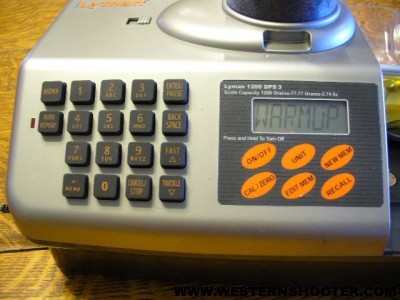
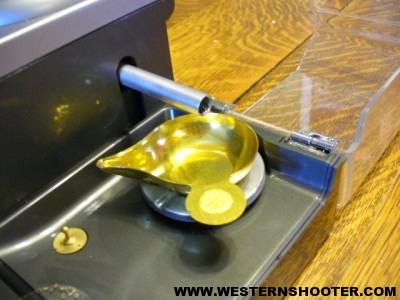
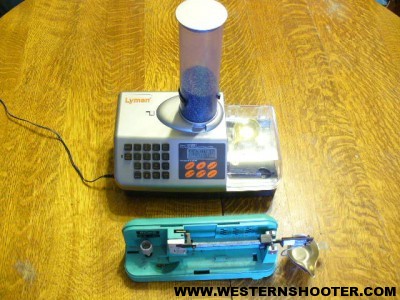
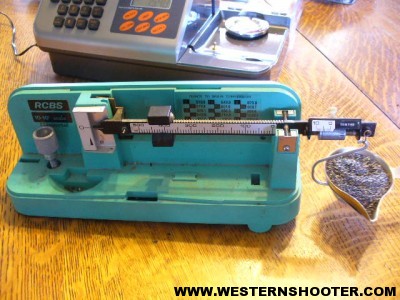
I have found a very easy way to get around that long warm-up. Just leave it on all the time! I have a PACT digital scale on my bench that has been on for the last four or five years.
Charlie